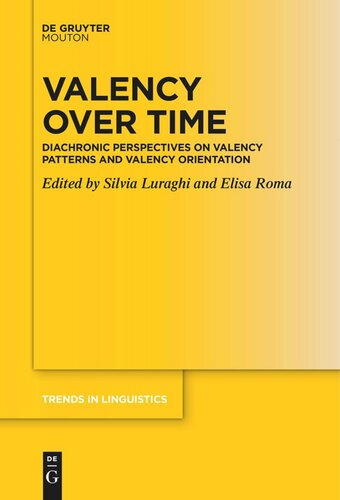

Most ebook files are in PDF format, so you can easily read them using various software such as Foxit Reader or directly on the Google Chrome browser.
Some ebook files are released by publishers in other formats such as .awz, .mobi, .epub, .fb2, etc. You may need to install specific software to read these formats on mobile/PC, such as Calibre.
Please read the tutorial at this link: https://ebookbell.com/faq
We offer FREE conversion to the popular formats you request; however, this may take some time. Therefore, right after payment, please email us, and we will try to provide the service as quickly as possible.
For some exceptional file formats or broken links (if any), please refrain from opening any disputes. Instead, email us first, and we will try to assist within a maximum of 6 hours.
EbookBell Team

4.4
22 reviewsOpen Access
Valency patterns and valency orientation have been frequent topics of research under different perspectives, often poorly connected. Diachronic studies on these topics is even less systematic than synchronic ones. The papers in this book bring together two strands of research on valency, i.e. the description of valency patterns as worked out in the Leipzig Valency Classes Project (ValPaL), and the assessment of a language's basic valency and its possible orientation. Notably, the ValPaL does not provide diachronic information concerning the valency patterns investigated: one of the aims of the book is to supplement the available data with data from historical stages of languages, in order to make it profitably exploitable for diachronic research. In addition, new research on the diachrony of basic valency and valency alternations can deepen our understanding of mechanisms of language change and of the propensity of languages or language families to exploit different constructional patterns related to transitivity.